In This Issue
The opinions, beliefs and viewpoints expressed in this publication are those of the authors. They do not necessarily reflect the opinions, beliefs, viewpoints or official policies of Autism Society Alberta. |
|
|
End article-->
YYC World Autism Day

Join us on Saturday, April 2nd for YYC's World Autism Awareness Day celebrations! This outdoor event (put together by AAFS and Autism Calgary) is open to the public and free of charge for all ages. It will take place at Olympic Plaza between 11am and 2pm. This event will feature a ton of different family-friendly activities as part of the festivities. There will be bubble blowing stations, a petting zoo, a bouncy castle, and more! For more information or to register click HERE.
|
|
|
Pay It Forward
Kitty Parlby
Many of us have been taking part in the April autism celebration for many years now. Whether this is your first or your 10th year, anytime in April is a perfect time to encourage autism acceptance and understanding. At the same time, you might consider taking an extra step to support ASA (Autism Society Alberta). Here are some of the supports and resources ASA offers to support you, your family, and the special needs community:
- Virtual support group meetings for autism families and for autistic adults
- One-to-one phone support with our Family Resource Coordinators
- Facebook support groups for families and autistic adults
- Free virtual presentations/workshops on a wide range of relevant and helpful topics
- Loads of resources on Autism Society Alberta’s website (including the live calendar)
There are so many fun and creative ways to join in to raise funds AND promote acceptance!
- Exercise class fundraiser: Whether it’s yoga, Pound (drumming), boot camp, spin, aquatic fitness, or Zumba, ask your fitness facility if they would consider collecting donations in April,
 or even donate the proceeds (fees) of one class to ASA. or even donate the proceeds (fees) of one class to ASA.
- Bake sale or starter plant sale: Who doesn’t love to nab some homemade baking that they didn’t have to bake or wash the dishes for? And with planting season coming up soon after April, many gardeners would love to buy some flowering or vegetable plants that you’ve started for them.
- Facebook fundraiser: I have personally done this for ASA. It’s quick and easy. Once on FB, go to the left-hand column, click on “Fundraisers” (if you don’t see it, click on “See More” first, and then scroll down). To choose an organization, you can type Autism Society Alberta in the search bar, and it’ll pop up. HERE is where you’ll find all you need to know.
- Garage/yard/community hall sale fundraiser: You can do this on your own, or with others in your community. What a great way to get to know your neighbours, and/or other autism families! It can happen at an indoor or outdoor location.
- Charity gaming fundraiser: I hear this is quite popular in the gaming world. People do a marathon game playing session and live-stream it. Fans and fellow gamers watch it live, from anywhere. There are often fun incentives activities that happen throughout to encourage donations. HERE is an article that tells more about charity gaming.

- Workplace fundraiser: Include your workplace in the April celebration! Give back to the community while encouraging camaraderie and boosting morale. Talk to your boss about what Autism Society Alberta does, and what a fundraiser could look like. Here are some ideas:
- Auction of skills: Ask employees to write down a skill or task they promise to provide to someone else, and then auction them off to the highest bidders. It could be things like a guitar lesson, baking a cake, cleaning the interior of a car, dog walking or sitting, assembling shelves, weed a garden, a tutorial for designing a website, building birdhouses; just about anything you can do or have a talent for.
- Lunch and learn: Bring in a guest to speak on a high-interest topic while employees are eating their bagged lunches. Charge a small fee or ask for donations to ASA. As an alternative, you could charge a bit more and order in pizza or subs.
- Raffle: Perhaps management will agree to hold a raffle for a paid day off of work, for the rights to a prized parking spot for a few months, or for a ‘switch positions with the boss’ day.
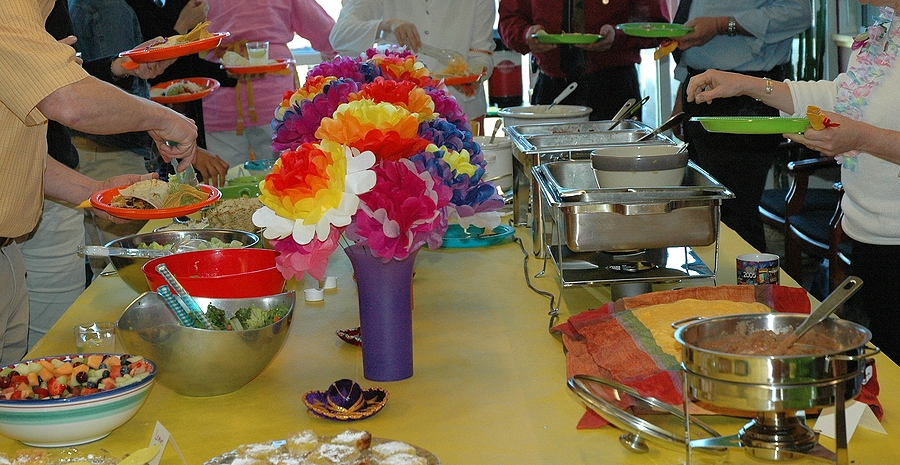
- Office bring-a-dish: This is a great break from the usual for lunch! Sell tickets to a bring-a-dish day, where everyone brings a dish of their favourite recipe; or you can come up with a theme, like Polish, Japanese or Mexican food.
- Guess the toddler competition: Would you recognize your co-worker or boss when they were a tot? Charge a participation fee for staff to bring in a photo of themselves. Number the back of the photos in pencil for identification. Have a prize for the person who has the most correct guesses. Lots of fun!
- Donation matching: Your business could really encourage donations by offering to match employees’ donations to ASA for a specified time period, essentially doubling the value of their donation.
Once you have a donation amount ready, here are a few ways you can get it to ASA:
- You can mail a cheque to Autism Society Alberta, 3639 – 26 Street NE, Calgary, Alberta T1Y 5E1
- Donate online through our website, HERE
- Are you in Calgary? You can drop off a cheque or cash donation in person, but please call 587-432-7192 to make an appointment.
Remember, any type of fundraiser you do can easily contain a friendly element of autism education, from your knowledge, from your journey, and from your heart. Supporting ASA will help us continue to be here for you, and for others.
Kitty Parlby is the mother of an autistic young adult, and a former special needs Educational Assistant. Currently, she is an autism speaker and consultant with Autism Inspirations, and also works as a Family Resource Coordinator for Autism Society Alberta.
|
|
|
My Many Roles
Karla Power
As a parent, and especially a mother, I always knew I would play many roles: mom, teacher, nurse, psychologist, etc. In all fairness, I have quite a bit of practice doing these jobs during the day. I think most teachers would agree that they do more than just teach.
However, there are two jobs that I do daily that I never expected to: translator and detective. I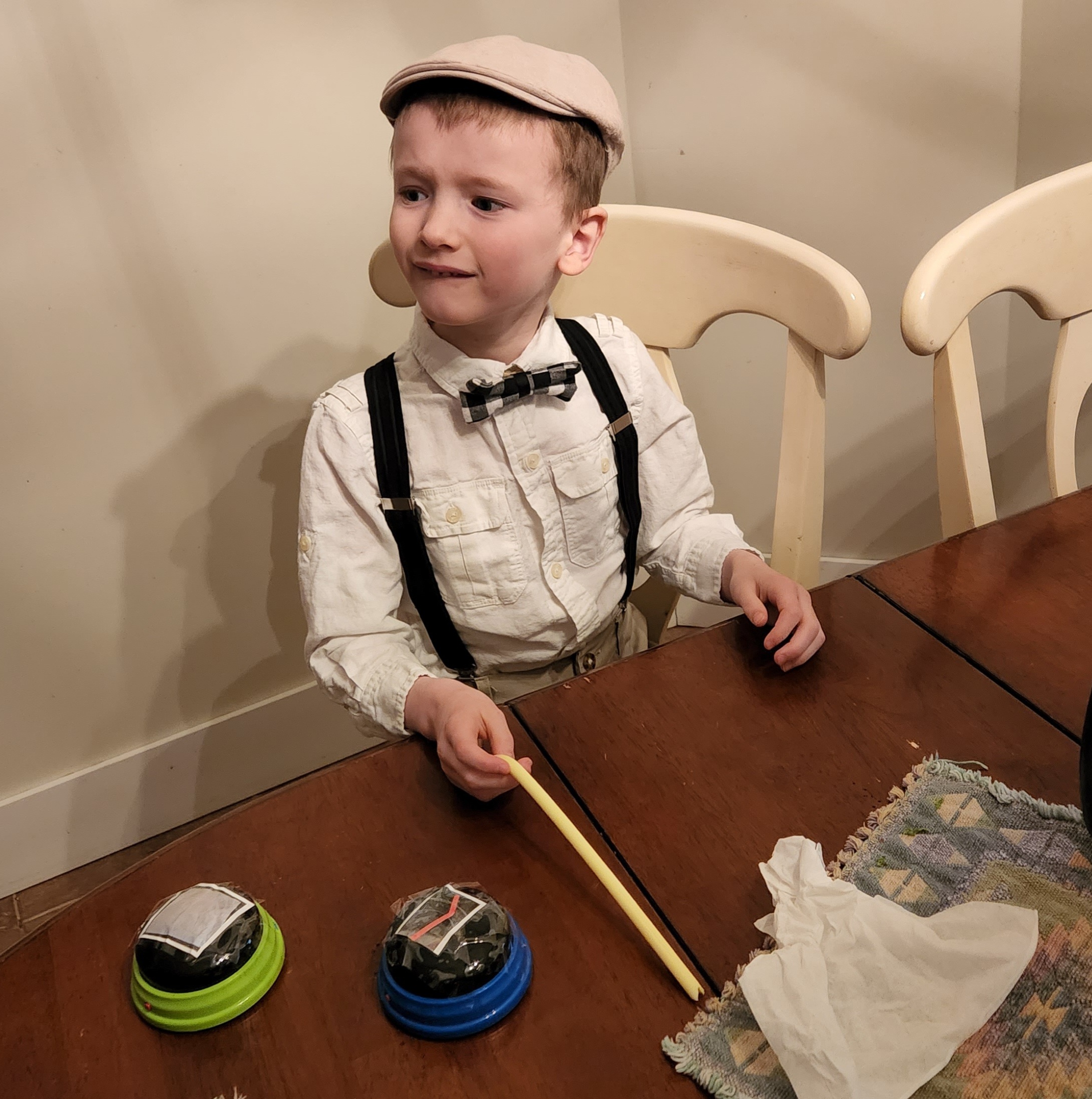 remember the first time I was complimented on my translation skills. It was Kelton’s first appointment with our private speech pathologist, and she was so surprised when I knew that Kelton wanted his socks off. How did I know? Out of the corner of my eye, when I was talking to her, I noticed that he was pulling at the elastic on his sock. Knowing how much he despises socks, I translated that non-verbal cue into “please take my socks off”. At that point, Kelton didn’t have very many sounds or gestures, like pointing, so I had to pay very close attention to understand what he wanted. remember the first time I was complimented on my translation skills. It was Kelton’s first appointment with our private speech pathologist, and she was so surprised when I knew that Kelton wanted his socks off. How did I know? Out of the corner of my eye, when I was talking to her, I noticed that he was pulling at the elastic on his sock. Knowing how much he despises socks, I translated that non-verbal cue into “please take my socks off”. At that point, Kelton didn’t have very many sounds or gestures, like pointing, so I had to pay very close attention to understand what he wanted.
The speech pathologist told me that I was an excellent translator, to which I replied, “I’m used to it!” - since I had been reading Paddy’s non-verbal cues for 4.5 years already! Unfortunately, being an excellent translator often discourages your kids from finding other ways to communicate with you.
Being a detective is something that I struggle with more. You see, when both of your children are non-verbal, it can be very difficult to figure out their needs and wants sometimes, especially when they don’t yet have the tools to communicate with you in an effective way.
Lately, Paddy has been struggling with sleep, and tends to cry (almost like a sorrowful gasping cry) when we put him to bed and when he wakes up. In the last three weeks, he has been waking up almost daily at 3 a.m. and doing the sorrowful cry for up to an hour. When we check on him, he doesn’t seem to need anything, but wants to watch TV (not exactly what we want to be doing in the middle of the night).
It took a lot of trial and error to figure out what he wanted though. First, we had to figure out if he 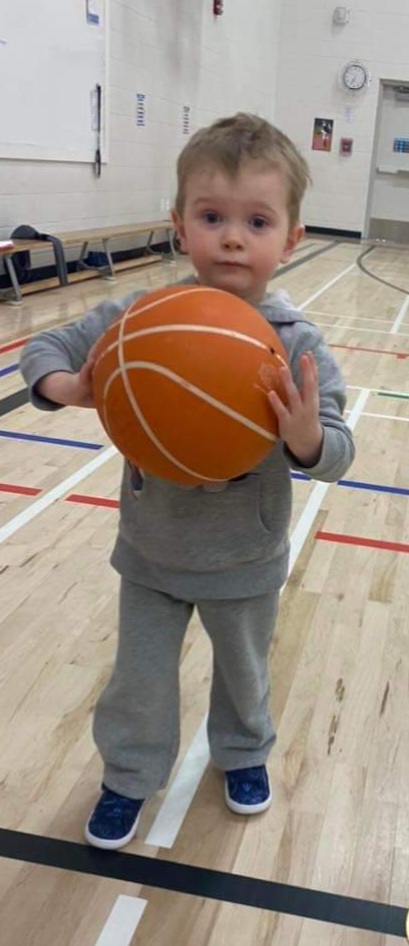 was in pain (this one is your tricky if your kid can't tell you and has high pain tolerance). Then we had to figure out if he was thirsty/hungry, had used the washroom or needed to, was too hot/cold, etc. I remember a friend of mine empathizing with me one time over these investigations, and realizing it was a bit like having an infant, where you have to figure out what they need with little more than a cry to go on, but for six years or more. Imagine being in that infant stage for that long! No wonder we are so tired! was in pain (this one is your tricky if your kid can't tell you and has high pain tolerance). Then we had to figure out if he was thirsty/hungry, had used the washroom or needed to, was too hot/cold, etc. I remember a friend of mine empathizing with me one time over these investigations, and realizing it was a bit like having an infant, where you have to figure out what they need with little more than a cry to go on, but for six years or more. Imagine being in that infant stage for that long! No wonder we are so tired!
Another conundrum we are currently trying to figure out is why Kelton is making himself throw up every other night. Over Christmas break, we all had the stomach flu, and since then, we have been changing his bedding at least three times a week! We have ruled out acid reflux and know he is not sick, as it is only happening at night when he is alone in his room. We have deduced that; a) he knows it’s wrong, which is why he is not doing it in front of us, and b) he must like the way it feels.
When we are constantly doing detective work and translating for our children, we rely on our instincts, each other, and the experts that work with our children. Luckily, our children are learning other ways to communicate, like using Proloquo2go and pointing. It is not very often that we are stumped as detectives or unable to translate, but when it happens, it sure weighs heavy on the heart. I just keep reminding myself to listen with more than just my ears, and that the boys will find a way to tell me.
|
|
|
Autism Calgary is Hiring!
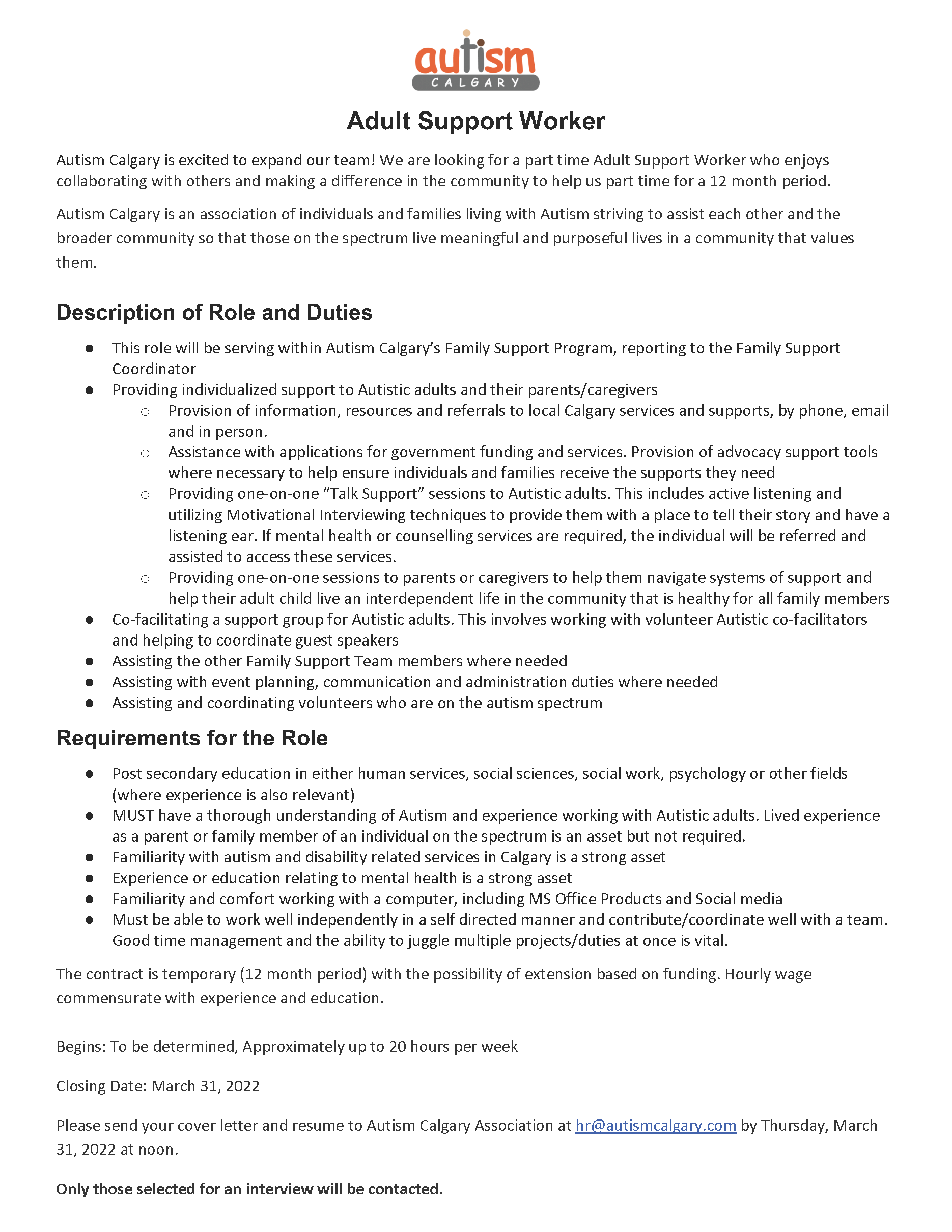
|
|
|
Scripting Part 2
Carmen Moore
This month, I continue to highlight the evidence-based practice (EBP) of ‘scripting’. In order to get started, you will want to identify the behaviour that you want to support. There can be two ways to think of that: do we want to grow a desired behaviour or decrease an undesired behaviour? That can look like expanding conversation skills that currently are very limited (just saying hi and then no follow up), or trying to curb something that is sometimes detrimental (for example: talking at someone as opposed to talking to someone).
 Once you choose something to grow or curb, you begin to collect some baseline data on the learner’s current ability. What can they do without prompts, supports, or scripting of any kind at the beginning of this process? That ‘baseline data/information’ can be collected as formally or as informally as needed. You could be as formal as using a timer, a tally taker, video, etc., or just really ensure you are paying close attention and keeping mental notes on what the learner can do initially. This will let you know if and when you are making progress with the scripting strategy. Once you choose something to grow or curb, you begin to collect some baseline data on the learner’s current ability. What can they do without prompts, supports, or scripting of any kind at the beginning of this process? That ‘baseline data/information’ can be collected as formally or as informally as needed. You could be as formal as using a timer, a tally taker, video, etc., or just really ensure you are paying close attention and keeping mental notes on what the learner can do initially. This will let you know if and when you are making progress with the scripting strategy.
After you have identified the behaviour to increase or decrease, establish the baseline without using the scripting strategy, and then an appropriate goal can be chosen. For example, to increase a desired behaviour, you may want to say that after two months of scripting, the learner will be able to participate in a four-part exchange without prompting for most of the time that they are engaging in small talk (with a baseline of one exchange). Another example of curbing a behaviour as a goal may be to stay on the topic of conversation without bringing up the learner’s ‘topic of interest’ for at least ten or more minutes. If the baseline data showed that only a minute or two could go by without bringing up the learner’s topics of interest (unrelated to the conversation), that would be a great goal to make. These would both be appropriate goals if social interaction was the focus for the learner.
There are some key points to consider when deciding whether or not scripting will be an effective or appropriate EBP to use to meet the goal. The length and type of script you use should be appropriate for the learner. Can the learner read? Will pictures be needed to better prompt and support the learner? Will a paper or screen be a better prompt? What are the skills of the learner? Are they able to express themselves verbally at all? Will an AAC (Augmentative and Alternative Communication) device be a part of the process? Do they have the skills needed to successfully use the AAC if necessary? Does the learner need full sentences written out? Will short phrases or keywords be enough to successfully support the learner? Can the learner understand and repeat spoken sentences/phrases/single words? Once you have thoroughly considered these factors, you can move forward to successfully implement scripting with the learner. support the learner? Will a paper or screen be a better prompt? What are the skills of the learner? Are they able to express themselves verbally at all? Will an AAC (Augmentative and Alternative Communication) device be a part of the process? Do they have the skills needed to successfully use the AAC if necessary? Does the learner need full sentences written out? Will short phrases or keywords be enough to successfully support the learner? Can the learner understand and repeat spoken sentences/phrases/single words? Once you have thoroughly considered these factors, you can move forward to successfully implement scripting with the learner.
When you begin to work on developing the script for/with the learner, scripts can be presented in a few different formats:
- Comments or questions posed by the learner
- Lines or cues for both the communication partner and the learner
- Lines and cues for the learner
What are some examples of these scripts? Donnie loves talking about space to anyone that he begins to talk with, whether the main topic of conversation has anything to do with space or not. If you know that the learner could use a script to engage with others on other general topics, one could create a script with other common questions. Most people like to go to the movies and this is a common experience, so a script could be questions to prompt. For example:
- What is your favourite movie?
- Why do you like this movie?
- What was your favourite part?
- What movie are you planning to see next?
An example of a script with a learner and a peer could be used as follows: Susan is a teenager and her goal is to request help when working at her part-time job. The boss may develop a script for Susan and a co-worker to use during times when Susan is experiencing difficulties. For example:
Co-worker: “Susan, do you need any help?”
Susan: “Yes, I do need help.”
Co-worker: “What do you need help with?”
Susan: “I don’t understand this part.”
(At this point, Susan can point to a few visuals, use keywords of certain job components, or show the exact issue, if possible)
Co-worker: Select one: “I can help you with that, Susan. Or: “Let me find the supervisor, and he/she can help you with that.”
 Another example of a script can be most of the expected exchanges at a sit-down restaurant as a customer. The menu can be accessed online before the visit to the restaurant, and the learner can choose the food and drink they will want to order. That way, the whole script can be made (and modelled/practiced, if needed) before even entering the restaurant, and the learner can feel more confident in a successful interaction. The scripts can be as exact or as general as needed. Another example of a script can be most of the expected exchanges at a sit-down restaurant as a customer. The menu can be accessed online before the visit to the restaurant, and the learner can choose the food and drink they will want to order. That way, the whole script can be made (and modelled/practiced, if needed) before even entering the restaurant, and the learner can feel more confident in a successful interaction. The scripts can be as exact or as general as needed.
Much of the information in this article is from the related AFIRM online module. It is free to sign up for AFIRM here. Look for part three of this scripting series next month, when I will discuss gathering materials, setting the stage for success, detailed information on the exact steps to use scripting successfully, fading the script systematically, finding ways to generalize the new skill, and the importance of monitoring to make adjustments if needed.
|
|
|
Meet Our FRCs

Hello! I am Lisa, from the Calgary ASA Family Resource Centre. I provide resources and family support to families in Calgary and the surrounding areas. I’m a proud mom of an autistic teenage son who also has a mild intellectual disability. It is because of my son that I am blessed to have a career as a Family Resource Coordinator. It truly is an opportunity that I am grateful every day for. I continue to learn from parents while I am on my own journey parenting a child with disabilities. I am fortunate to work alongside a wonderful team of coordinators who are dedicated to supporting families across Alberta.
If you are in the Calgary area and need resources or support, I would love to hear from you! You can reach me at lisav@autismalberta.ca. Have a wonderful spring!
|
|
|
Family Resource Centre Calendar of Events
Never miss another one of our presentations! Subscribe to our calendar by clicking HERE and then hitting the + in the bottom right of the calendar.
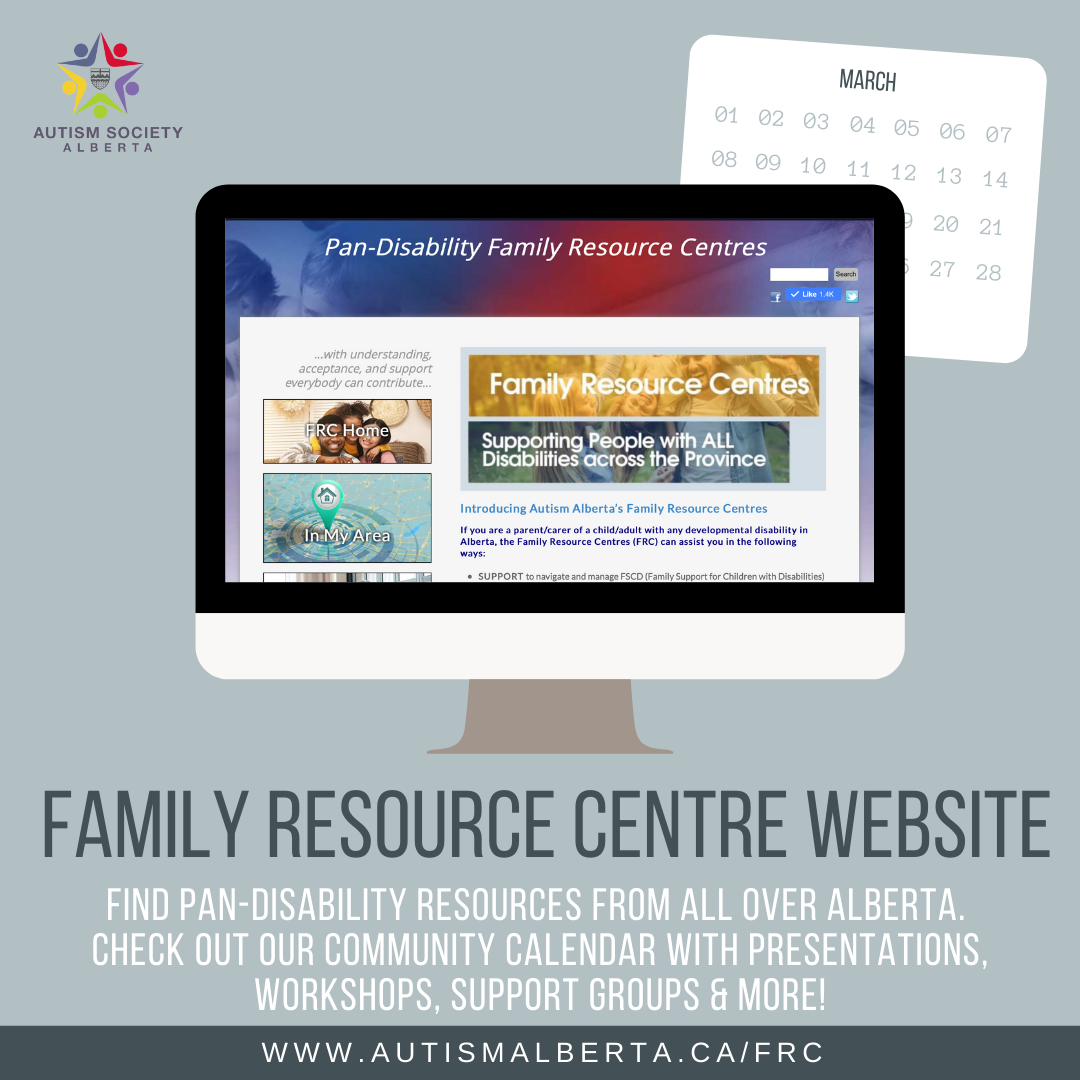
|
|
|
Building Resilience
Maureen Bennie
From the Autism Awareness Centre Inc. Blog:
Throughout life, every person faces challenges, obstacles, and difficulties that they must overcome. The ability to bounce back through adversity is called resilience. Resilience involves working through challenges in a proactive way, which helps build confidence and mastery in overcoming difficulties. Being able to do so supports personal growth, mental health, and contributes to positive feelings of self-worth and self-esteem.
Resilience is a self-replicating skill, because once a person has successfully managed a challenging situation, they’ll feel more confident about their ability to overcome difficult situations. As confidence grows, so does resilience.
Autistic people face specific challenges that can cause setbacks around feelings of confidence and self-worth. Living in a non-autistic world can be overwhelming and frightening. A lack of accommodations can lead to anxiety, stress, and burnout. Communicating one’s needs successfully can be difficult, particularly if there are not appropriate supports in place to be able to do so. A lack of predictability can be stressful; new activities can trigger meltdowns or shutdowns. accommodations can lead to anxiety, stress, and burnout. Communicating one’s needs successfully can be difficult, particularly if there are not appropriate supports in place to be able to do so. A lack of predictability can be stressful; new activities can trigger meltdowns or shutdowns.
Without resilience, autistic people can find life increasingly challenging, may not be able to cope with new things or changes, and may want to withdraw from social situations. Building resilience early on in life can help a child feel confident to take on new challenges and succeed.
What are the positive aspects of resilience?
Resilience helps an autistic person:
- make their way through life’s milestones in a positive way
- build self-confidence and self-esteem
- build a strong self-identity
- manage change or unpredictability
- recover from setbacks or disappointments
- reduces stress and anxiety
- succeed in challenges and also accept and learn from mistakes and failures
- understand the need for practice to develop a new skill
- set the stage for a more independent adulthood
- understand social-emotional boundaries and limits and work within those
- foster a sense of place in the world and a feeling of belonging
- build the confidence to take on new challenges
- transition from childhood to adolescence to adulthood
What gets in the way of resilience?
Some factors can hinder or make it difficult to acquire resilience such as:
- Invalidation – This happens when a person’s identity, self, safety, experience, or beliefs are invalidated by others. This can happen through bullying, abuse, violence, or discrimination. An invalidating statement is “you can’t” instead of “you’re learning how to” or “I am learning how to teach you”. Validating and reassuring a person not only builds confidence but is essential for a trusting relationship.
- Assuming Incompetence – This happens a lot to autistic people and can take a variety of forms such as assuming they can’t make decisions, live independently, work, or have friendships or relationships. Assuming incompetence can become a negative and damaging self-fulfilling prophecy, that robs an autistic person of confidence and the ability to try things on their own.
- Overprotection – Parents or those in caring/supportive roles may want to protect autistic people from facing challenges or difficulties. Constant shielding can cause a person to lose confidence in their ability to do things. Self-doubt hinders resiliency.
- Negative messages – Autistic people are often defined by their deficits rather than their strengths. They’re told what they can’t do rather than what they can. This type of messaging creates difficulty in acquiring resilience.
- Past failures – This can work both ways, as a learning tool or obstacle to gaining resilience. If mistakes are emphasized and focused on by adult role models or important people in a person’s life, it can have a negative impact on resilience. Negative responses to failure can be traumatic or cause ruminating thoughts. Failure needs to be put in perspective as a part of life, and support provided to move on and try again. Talking about failure in a non-judgmental way, and discussing how to use the learning experience in a similar situation will support resilience.
- Perfectionism – Wanting to be perfect and fearing failure around a specific activity can be anxiety-provoking. It can prevent a person from trying the activity, or if they do start it, from completing it because of worrying that what they do will not be good enough. The need to be perfect is often mistaken for avoidance or challenging behaviour.
How do we build resilience?
Building resilience is all about practice. The best way to do this is through a series of controlled challenges, and then add to those challenges in small increments. Think of it like sports training – go slowly and increase challenges through new exercises. Ideally, when a child masters one challenge, this will build their strength and confidence to take on the next challenge. It’s especially hard for parents to watch their children struggle with tasks, but if we always step in, our children don’t learn and grow.
I will give you an example of a controlled challenge with my own two autistic children, who are now adults. When Marc and Julia were 13 and 11, I had them volunteer with me at a farmer’s market that my adult figure skating group owned and operated. My children knew all of the volunteers from being at the ice rink with them, so they had some predictability. They were given simple jobs to do, and as they gained mastery of those tasks, more were added in small increments. They were also given clear expectations about the work environment, such as they couldn’t use tech devices while on the job, they had to wear a uniform, and they took their instructions from the market manager, not me.
Over the 9 years that they worked at the market, their confidence grew in a number of areas. Both were able to cope with seeing dogs on leashes (that was a phobia at the time they started volunteering), they earned points every shift which they could cash in for things that they wanted (the more expensive the item was, the more points required, so they learned that one has to work more hours for a pricier item), they learned how to report to a manager, take instructions from a variety of individuals, and my son’s diet grew from less than 10 foods to eating every fruit and vegetable he was exposed to at the market. Marc took pride in and felt confident with eating the things that came from his workplace. That later morphed into a horticulture course for him, growing his own fruits and vegetables in a garden, which then led to him eating soup and salads at the age of 21 – something I thought would never happen.
Marc and Julia were well supported in trying new experiences at the market, but at the same time, these risks were well supported. By providing support, anxiety levels were kept well in control, and any mistakes made were seen as a learning experience. Volunteering at the market led to other job experiences that they were able to do with greater ease because of all the skills they gained volunteering in a controlled, low-pressure environment.
Key Concepts Around Resilience to Convey to Children
The key concepts to tell children about resilience are:
- Just because something seems difficult, that isn’t a reason not to do it.
- With some help, you’ll be able to overcome difficulties.
- No one masters a skill right away – they have to practice. Don’t give up just because a skill takes practice to learn.
- When trying something new, it’s ok to ask for help from a parent or someone you trust.
- Overcoming something hard will make you feel really good, will mean you can do it again in the future, and it will probably be easier.
- It’s ok to compete and it’s also fine if you don’t win.
- If you don’t get it right the first time, it’s fine.

Building self-confidence and self-esteem at an early age will be very strong protective factors for long-term well-being. These are also the building blocks for resilience and independence, which are the foundation for successful adulthood.
|
|
|
Centre for Autism Services Alberta Update
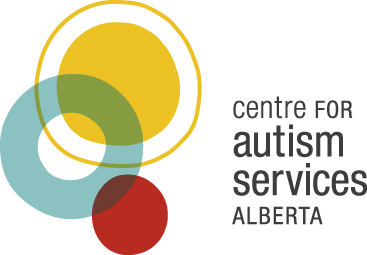
The Centre for Autism Services Alberta has lots of exciting happenings for spring!
Spring Programs
Spring program registration is officially OPEN! There are lots of fun offerings for a variety of age groups in creative programs, social groups, and even cooking! Spaces tend to fill quickly, so apply today!
Upcoming Workshops
The Centre for Autism Services Alberta will be presenting a FREE workshop through AIDE Canada on Tuesday, April 19, 2022, from 6-8 pm, entitled Picky Eaters. This workshop will be presented by two of our Centre’s occupational therapists, Tamara Loke and Adrienne Dunbar. For more information and to register, visit the AIDE Canada platform HERE.
Preschool & Kindergarten
Did you know that the Centre for Autism Services Alberta in Edmonton offers onsite preschool and kindergarten PUF programs? We offer specialized programs dedicated to children with developmental disabilities, and our programs use play as a foundation for learning! Program applications are currently being accepted for Fall 2022. Fall programs will take place onsite at our NEW location! 9535-50 Street NW, Edmonton.
For info on eligibility, and to apply, email Joanne at puf@centreforautismab.ca or call 780-488-6600. For general information on our PUF programs, please visit the PUF page on our website HERE
|
|
|
Autism Society of RMWB Update
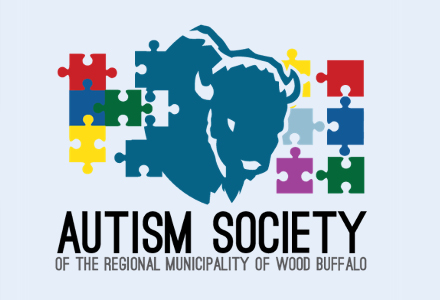
The Autism Society of the RMWB (Ft. McMurray and the surrounding area) has been preparing for April for a few weeks now. We have been gathering items donated from local businesses, planning things we would like to happen during the month, and finding ways to bring awareness and acceptance to the community. April is always a fun month. Last year we hosted an auction, had a comedy show, and made many different social media posts with facts and videos.
This year we are planning the auction again. We have already gotten so many amazing donations from community members and businesses. We have also seen many people in the community hosting events and fundraisers in April for autism acceptance and awareness. We are so thankful for the amazing support we receive each and every year.
Although summer seems like a far stretch away, we are dreaming of warmer weather and have already set the dates for our summer camp. Camp Kids First will run from July 4th-August 12th, servicing children with differing needs, ages 4-17! We are so excited to see what this summer will bring!
We have also started a Friday night youth program for some of the older kids, which has been such an amazing group so far. These kids get to choose what they want to do each week and learn skills like money handling, scheduling, and socializing. So far, the group has gone dog sledding, escape rooms, bowling, campfires, swimming, and even rented a video game trailer!
We are so excited about what the next few months bring as restrictions are lifting, and we can get out and do more things!
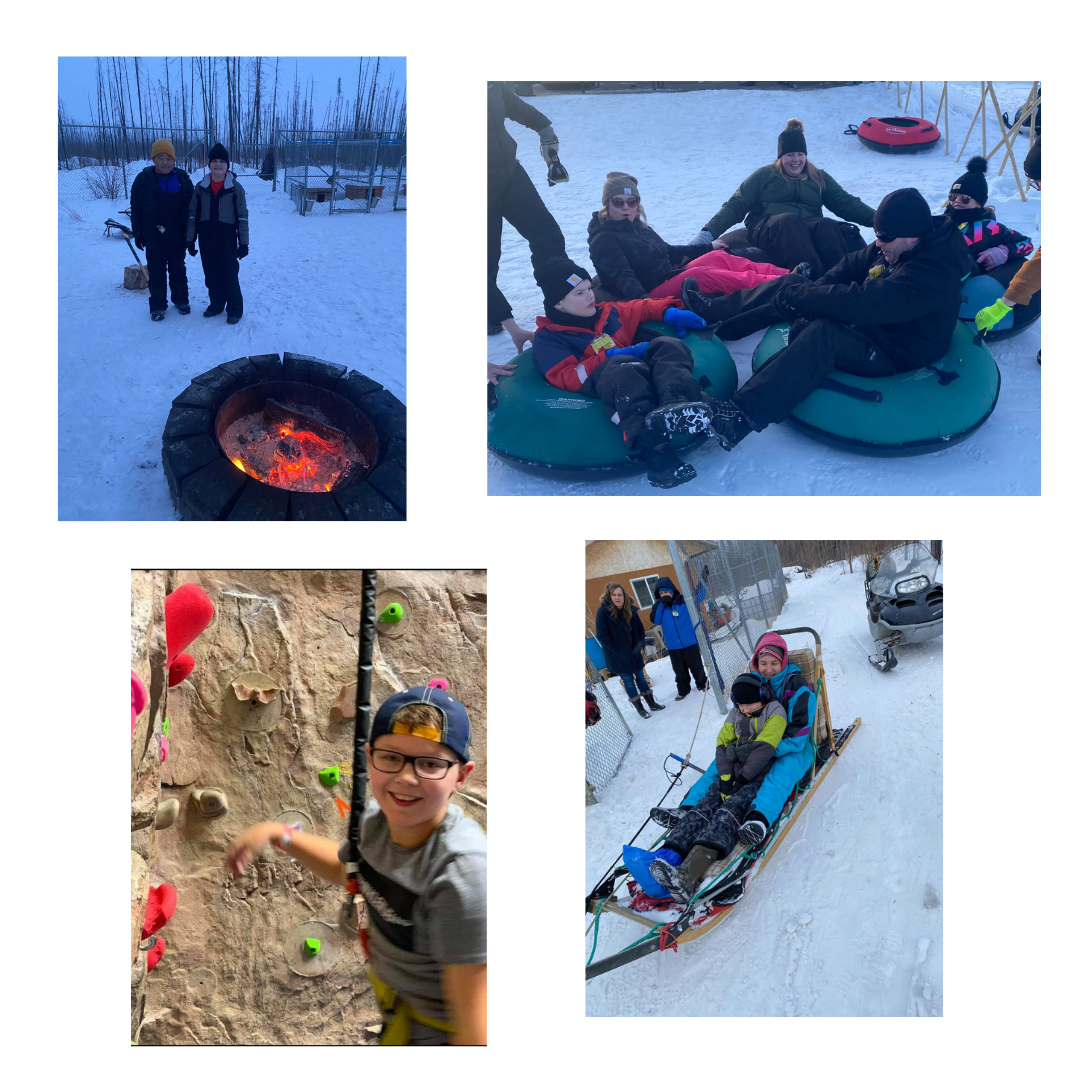
|
|
|
Connection & Co-regulation
Jillian Butler
As a parent to two tiny humans with autism, my patience level and overall fatigue are frequent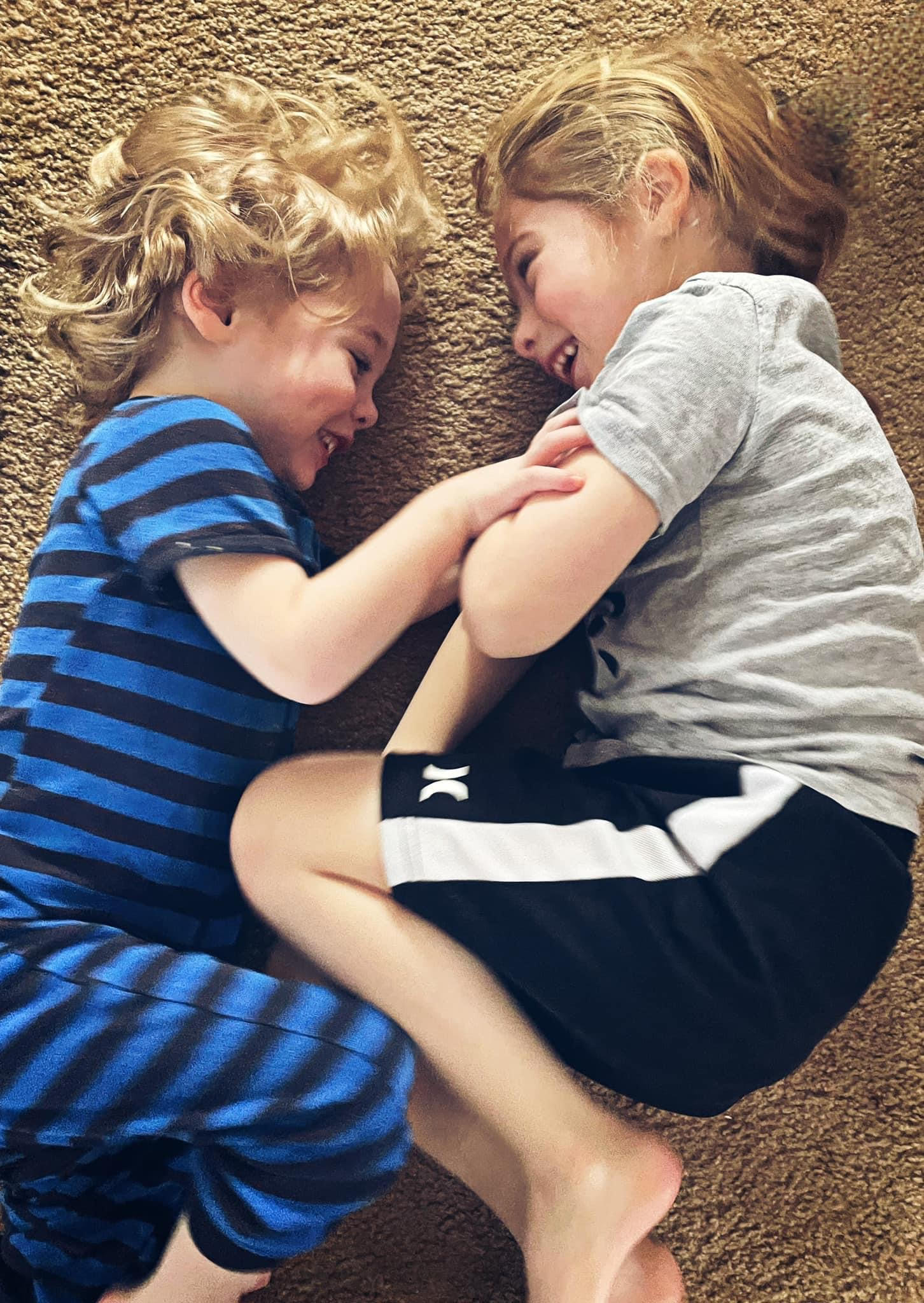 factors that impact my parenting and mental health. I am sure that this is a battle that all parents experience in waves, with everyone walking their own unique journey. Recently, I had a moment where I felt like I was broken open and raw – a moment that I later considered a win, when the parent guilt was secondary, and I can say I felt proud, inspired, and connected to my son. factors that impact my parenting and mental health. I am sure that this is a battle that all parents experience in waves, with everyone walking their own unique journey. Recently, I had a moment where I felt like I was broken open and raw – a moment that I later considered a win, when the parent guilt was secondary, and I can say I felt proud, inspired, and connected to my son.
We live inside big feelings in our home; moments where joy radiates and simplicity is celebrated. We also experience overwhelming upsets that leave my oldest son feeling completely out of control, aggressive, and seemingly unreachable. As a mom, as a parent, those challenges are a feeling deep in the gut that takes your breath and confidence away.
I have often used any possible distraction in those times to help my son get his bearings; treats, toys, tablets. I am sure that, short of standing on my head, I have tried it all. I am guilty of too often being in a hurry or looking for a quick fix. I admit to feeling frustrated. I wish so much that he was able to express what I could do to help him. His aggression, which has varied from self-harm to harming others, is heavy on the heart.
I think on this particular day, there could have been many possibilities that led up to his emotional and physical eruption - rearranged furniture, overexertion at a park, sibling frustration; I’m not entirely sure. In any case, my poor little dude was just at his limit. He was physical with me, scratching and pulling. Holding my son in the heat of the moment is futile; he will further escalate. I moved away, but within close proximity, just a few feet away. He started throwing anything he could get his hands on. Somehow, for whatever reason, at this moment, I managed to stay calm. I closed the blinds and curtains to help with his heightened sensory input. I lowered my voice, sat cross-legged on the floor, and told my boy in a whisper, “I am here, buddy.”
After what felt like 20 minutes, but was more likely about two, my little love scooted back to me. He rested his head on my lap, took one of my hands, and put it on him for some physical reassurance. I played with his hair, told him in an almost whisper how much I love him, and how proud I am of him. I felt his body relax. He took some deep breaths, and would you believe, he fell asleep. I stayed in that position with my big 5-year-old, with tears on my cheeks, until my body was weak.
I was present with him; we rode the storm together. I didn’t try to distract or walk away. I helped him become grounded and gain control of his body. He helped me remember the power of connection and co-regulation. I was reminded to slow down, breathe, and be there. My sons are undoubtedly my biggest teachers, and I will forever be their biggest fan.
Thank you for the reminder little one; I see you. We’ve got this.
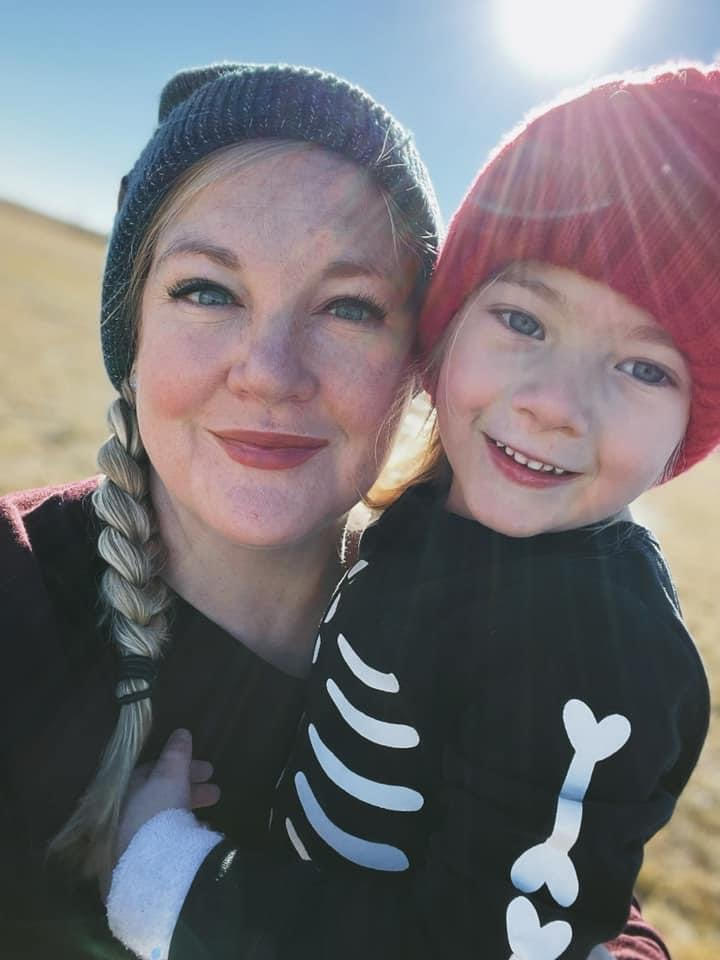
|
|
|
ASA's Adult Support Group
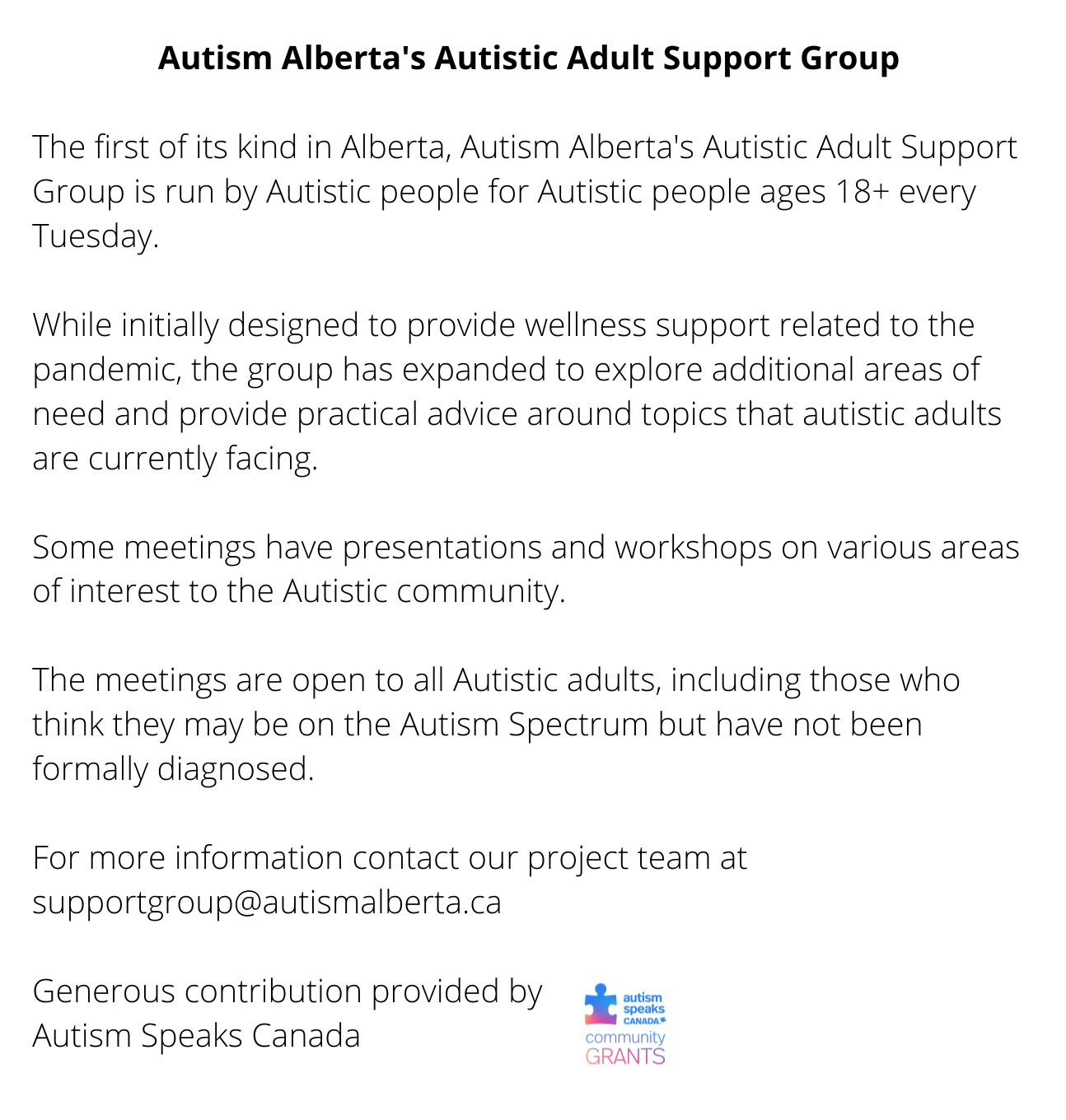
|
|
|
|
|